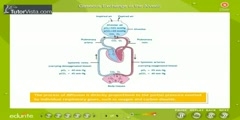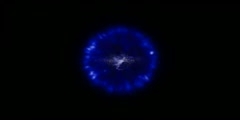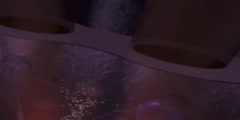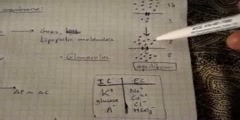Lec 21 - Exchanges, Brokers, Dealers, Clearinghouses
"Lec 21 - Exchanges, Brokers, Dealers, Clearinghouses" Financial Markets (2011) (ECON 252) As the starting point for this lecture, Professor Shiller contrasts the view of economics as the theory of the allocation of scarce resources with the view of economics as the study of exchange. After a discussion of the difference between brokers and dealers, he outlines the history of securities exchanges from ancient Rome, to the Amsterdam Stock Exchange and Jonathan's Coffee House in London, until the formation of the New York Stock Exchange. He complements this historic account with an overview of securities exchanges all over the world, covering India, China, Brazil, and Mexico. An example of a limit order book allows him to elaborate on the mechanics of trading at the National Association of Securities Dealers Automatic Quotation System (NASDAQ). Subsequently, he turns his attention to the growing importance of program trading and high frequency trading, but also discusses their impact on the stock market crash from October 19, 1987, as well as on the Flash Crash from May 6, 2010. When talking about fairness in financial markets, particularly with regard to the relation between private investors and brokers, he discusses the National Market System (NMS), the Intermarket Trading System (ITS), and consolidated quotation systems. He concludes this lecture with some reflections on the operations of dealers, addressing the role of inside information and the Gambler's Ruin problem. 00:00 - Chapter 1. Exchange as the Key Component of Economic Activity 05:50 - Chapter 2. Brokers vs. Dealers 12:25 - Chapter 3. History of Stock Exchanges around the World 24:28 - Chapter 4. Market Orders, Limit Orders, and Stop Orders 36:15 - Chapter 5. The Growing Importance of Electronic Trading 44:46 - Chapter 6. Instabilities Related to High Frequency Trading 59:14 - Chapter 7. The Frustrations as Trading as a Dealer Complete course materials are available at the Open Yale Courses website: http://oyc.yale.edu This course was recorded in Spring 2011.
Video is embedded from external source so embedding is not available.
Video is embedded from external source so download is not available.
Channels: Finance
Tags: Lec 21 - Exchanges, Brokers, Dealers, Clearinghouses
Uploaded by: yalefinancialmkt ( Send Message ) on 14-09-2012.
Duration: 69m 23s
Here is the next lecture for this course
Lec 19 -Year 2008 - Brokerage, ECNs, etc.
01:12:39 | 2328 viewsBreathing and exchanges of gases
05:01 | 5019 viewsPhysical Science-How Do Electric Generato ...
02:38 | 10095 viewsKnowing about the Human Respiratory System
05:56 | 9927 viewsCell transport physiology (part 1 out 5)
05:08 | 6794 viewsLec 23 -Year 2008 - Options Markets
01:07:51 | 2546 viewsLec 25 - Models in 3D Space (1869-1877); ...
49:02 | 2618 viewsLec 24 - Creating a Nation
40:56 | 2002 viewsLec 27 - Global Warming
46:44 | 2762 viewsLec 15 - Forward and Futures Markets
01:12:37 | 2630 viewsLec 16 - Guest Speaker Laura Cha
01:02:51 | 2200 viewsLec 20 - Professional Money Managers and ...
01:13:25 | 2374 viewsNo content is added to this lecture.
This video is a part of a lecture series from of Yale
Lecture list for this course
Lec 1 - Introduction and What this Course Will Do for You and Your Purposes
Lec 2 - Risk and Financial Crises
Lec 3 - Technology and Invention in Finance
Lec 4 - Portfolio Diversification and Supporting Financial Institutions
Lec 5 - Insurance, the Archetypal Risk Management Institution, its Opportunities and Vulnerabilities
Lec 6 - Guest Speaker David Swensen
Lec 8 - Theory of Debt, Its Proper Role, Leverage Cycles
Lec 11 - Behavioral Finance and the Role of Psychology
Lec 12 - Misbehavior, Crises, Regulation and Self Regulation
Lec 14 - Guest Speaker Maurice
Lec 15 - Forward and Futures Markets
Lec 16 - Guest Speaker Laura Cha
Lec 20 - Professional Money Managers and their Influence
Lec 22 - Public and Non-Profit Finance
Lec Last - Finding your Purpose in a World of Financial Capitalism













